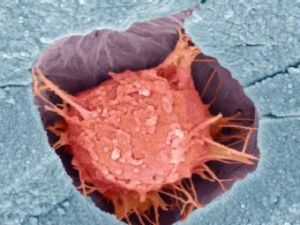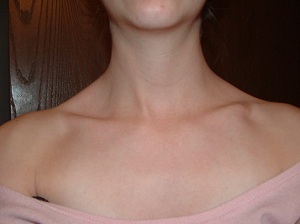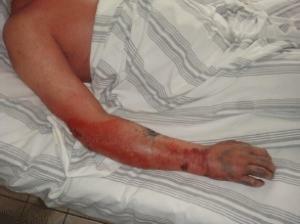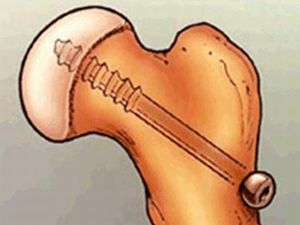 Bone tissue is one type of connective tissue.
Bone tissue is one type of connective tissue.
It consists of bone cells, the organic skeleton of the bone, the main intercellular substance.
Bone tissue has four cell types:
- The osteoblasts are growth cells that participate in the creation of bones.
- Osteoclasts - cells opposite to osteoblasts - are responsible for the destruction of bones. Osteoblasts and osteoclasts are continuously working on the destruction and creation of bones. It is this process that allows the body to adapt to physical stress.
- Osteocytes are cells emerging from osteoblasts. They are contained in the intercellular substance and are responsible for the metabolism of bone tissue.
- Osteogens , or they are also called undifferentiated mesenchymal bone cells. Of these, new osteoblasts and osteoclasts appear.
Contents of the article
- Regeneration of bone tissue
- What is a callus?
- Stages of formation of build-up
- Features of education on different bones
- Diagnostic approach
- When to delete?
- Preventative measures
Regeneration of bone tissue
After fractures, bone tissue regenerates, allowing the bones to fuse.
Regeneration is of two types:
- Physiological regeneration of is a constant and very slow process of restoring tissue structures.
 This process occurs in a healthy body as tissues grow old and die. A simple example of physiological tissue regeneration is the skin, which exfoliates and peels off. The process of physiological regeneration does not cause stress in the body.
This process occurs in a healthy body as tissues grow old and die. A simple example of physiological tissue regeneration is the skin, which exfoliates and peels off. The process of physiological regeneration does not cause stress in the body. - Reparative regeneration of , on the other hand, causes stressful reactions in the body, since this process is triggered when the tissue is damaged or lost. The process of reparative regeneration depends on the differentiation of the tissue: the higher it is, the more difficult it will be to restore the structure.
Once the bone tissue is damaged, it undergoes several stages of the reparative process, restoring the anatomical shape, histological structure and functional fitness.
A bone fracture is accompanied by a rupture of adjacent soft tissues, which causes stress in the body, accompanied by a local and general reaction.
Restoration of bone tissue is a long process that depends on a number of factors:
- of the patient's age;
- state of the body;
- quality of treatment;
- blood supply to the bone.
What is a callus?
Reparative processes between bone elements are not directly possible. This is due to the periosteum.
During a complete fracture, it is she who is responsible for the healing of bone elements, forming bone calluses.
First this process occurs in the subperiosteal areas, then in the inner layers, then in the medullary canal and only then between bone fragments.

In the photo, the callus after the fracture of the clavicle
looks like this in the form of a set of outgrowths of various sizes and arranged randomly. In the process of recovery, build-ups one by one dissolve, and there remains only one directly at the site of the fracture.
This will be the bone callus, most of all it is noticeable after the fracture of the clavicle, since it is located directly under the skin.
There are several types of bone blisters.
- Peristalnyj .It looks like a small thickening that forms on the outer part of the bone. This kind of corn is very quickly regenerated, as it is well supplied with blood.
- Endoostal , which is located inside the bone, next to the bone marrow valve.
- Intermedial , which is located between bone fragments.
- Paraossal is a protrusion that surrounds part of the broken bone.
Conditions for the formation of bone callus depend on the type of fracture: complete or incomplete.
Incomplete fractures are also called cracks and occur much more often. A crack in the bone is less often diagnosed, since in most cases it simply does not pay attention to it.
Full fracture is less common, but is accompanied by more serious consequences, such as complete rupture of bone and periosteum.
In this case, the formation of the bone callus will depend on three factors:
- where the fracture occurred( since all bones heal individually);
- what it looks like ( comminuted, transverse, spiral or oblique);
- function of the affected area of ( it does not directly affect the formation of corn, only its appearance).
Stages of formation of build-up
The formation of bone callus occurs in stages. 
- The first stage of : a scar appears a week after the fracture.
- The second stage of : the scar turns into a cartilage element one month after the fracture.
- The third stage of : transformation of cartilage into ossified tissue( if calcium deposition occurs).The conversion period is from 3 to 5 months.
- The fourth stage of : the final formation of the callus, which ends after a minimum of a year after the injury.
With all the conditions for the formation of the bone callus, this is considered the norm. The pathological course it takes if at least one condition for its formation is violated.
Bone callus anomalies may appear for a number of reasons:
- is an incorrectly chosen fracture treatment tactic;
- improper comparison of bone fragments;
- infringement of rules to patients( for example, when he early begins to load a part of the body on which there was a fracture);
- weakness of the body( disruption in the endocrine system, decreased immunity and other chronic diseases);
- suppuration of fracture.
Features of education on different bones
The timing of the formation of bone callus and its character are dependent on which bone has undergone a fracture.
- Clavicle .When this bone is fractured, the callus is formed within 1.5-2 months. In most cases it quickly resolves, however, it can remain in the form of a build-up. This bone callus is most noticeable, since the clavicle is located closest to the surface of the skin.
- Nose .This bone is most often exposed to the formation of a callus. Also, there are often formations after rhinoplasty. They are formed on average 3-4 months, and the final healing of the nose will occur only two years after the operation.
- Rib .Bone callus with rib fractures is formed within a month. Often the formation causes pain and discomfort. After 3-4 months, a full-fledged education appears. Such a corn persaws throughout the year.
- toe .The callus appears not only on the fingers, but also between them. Corn on these bones is formed quite quickly - for 1-1,5 months. At this time, it is recommended to wear shoes that do not create friction and do not interfere with the normal healing of the fracture.
- Heel .The formation of the bone callus on this site occurs in 2-3 months.
Diagnostic approach of
 You can learn about the appearance of bone callus by making an X-ray. The formation of the pathology will look like a cloud in the place where the bone was broken.
You can learn about the appearance of bone callus by making an X-ray. The formation of the pathology will look like a cloud in the place where the bone was broken.
If the picture shows already formed callus - this indicates that the fracture happened a long time and the bone has already begun to grow together.
According to the picture, a trauma doctor can accurately determine when an injury was received and appropriate treatment was prescribed.
When should I delete?
In most cases, bone callus is not needed. However, it often happens that its location interferes and creates painful sensations( for example, if it is located on the heel or collarbone).
Also, a callus on the nose requires treatment, since this part of the face takes a non-aesthetic appearance.
There are several methods of removing a build-up without surgical intervention that takes a long time and is difficult. This is a whole complex of procedures and compliance regime:
- complete release of bone from physical exertion and sudden temperature changes;
- special diet;
- continuous monitoring of a physician in a hospital;
- physiotherapy procedures: electrophoresis, magneto- and thermotherapy.
If corn is accompanied by not passing pains, doctors go to extreme measures - surgery. However, this kind of getting rid of the callus can not guarantee a 100% result.
Preventative measures
To prevent the appearance of bone callus is much easier than to treat. For this, several rules should be observed: 
- must always consult a doctor even with bruises or cracks;
- strictly follow the recommendations for fixing the broken bone;
- to try to avoid pathologies that may occur in the process of bone coalescence;
- observe antibacterial prophylaxis during open fractures.
Bone corne itself is not considered pathology and indicates that the fusion of parts of the broken bone has begun. However, this does not mean that the process will be correct and effective.
In order to avoid possible troubles, it is necessary to timely diagnose, consult a doctor and follow all his recommendations.



